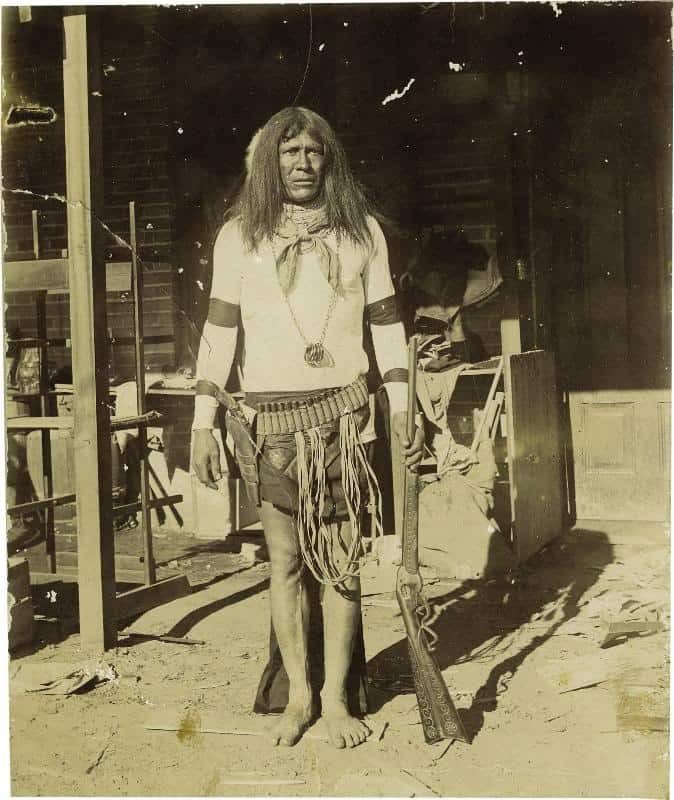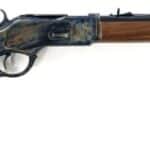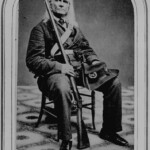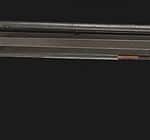
Introduction
In the kaleidoscope of American firearm history, the Evans Repeating Rifle holds a distinct and unusual place. This extraordinary piece of weaponry, born from the mind of Warren R. Evans, a dentist from Thomaston, Maine, stands apart as one of the most singular rifles ever produced on American soil. Guided by the ethos of innovation and practicality, Warren, along with his brother George, honed the design of this inventive rifle, establishing the "Evans Rifle Manufacturing Company" in Mechanic Falls, Maine in 1873. Their firearm enterprise was buoyed by the marketing prowess of Merwin & Hulbert, a notable name in the arms industry who also invested into their fledgling company.
Failed Vision of the Evans Repeating Rifle
Evans had initially envisioned the repeating rifle as a military weapon, tailored for the needs of the United States Army. However, when put to the test, the rifle fell short of the Army's exacting dust standards. Undeterred, Evans shifted gears and offered it as a sporting rifle. The remarkable feature of this rifle lay in its radial block receiver, a trait it shared with the Spencer, combined with an Archimedean-screw magazine nestled within the rifle's spine that held an impressive 28 rounds. Each quarter-turn of the fluted cartridge carrier cycled a new round into the breech, making it a formidable piece of technology for its time.
However, the Evans Repeating Rifle had its shortcomings. The proprietary round was challenging to come by, and the delicate mechanism of the rifle struggled with dust. These obstacles, coupled with an over-saturated post-war arms market and stiff competition, led the Evans Repeating Rifle Company to bankruptcy in December 1879.
Made in Maine
Despite this, the Evans brothers managed to manufacture nearly 15,000 units between 1873 and 1879, securing a place in history as the only firearm mass-produced in 19th century Maine. Interestingly, the Evans rifle also had the highest magazine capacity of any rifle mass-produced during this period.
Design & Evolution
Let's delve into the architecture of the Evans Repeating Rifle. Much like the Spencer Repeating Rifle, the Evans featured a rotary helical magazine in its buttstock. This high-capacity magazine was a key selling point, holding up to 28 (some claim up to 34) rounds. A simple cycling of the cocking lever/trigger guard would load a new round into the breech. The helical pattern of the magazine fed cartridges through a trapdoor in the buttplate, facilitating seamless reloading.

The Evans Repeating Rifle has a fascinating evolution through its production years. The initial model, produced from 1873 to 1876, was characterized by the absence of a lower buttstock. This left the magazine tube exposed along the bottom of the stock, a design choice that was later addressed. The original model also lacked a dust cover on the ejection port. After 500 of these original models were produced, changes were implemented, leading to the creation of the "Transition Model."
Apache Indian with Evans Repeating Rifle, circa 1880
By 1876, Evans had improved upon his original design. The Transition Model featured a lower walnut buttstock and a redesigned buttplate, increasing the rifle's balance and durability. This model underwent further refinements, ultimately leading to the creation of the "New Model."
Alleged testimonials from colorful characters like Kit Carson, Jr., (a stage performer named Jim Spleen, not related to the famous frontiersman) and the renowned Buffalo Bill Cody, extolled the virtues of the Evans Repeating Rifle. These endorsements stimulated demand for a more powerful cartridge, prompting George Evans to revisit the design. By the summer of 1877, the New Model, featuring a larger, more robust receiver, and a sliding dust cover over the ejection port, was launched.
Accompanying the release of the New Model was the introduction of a new .44 caliber cartridge. This new 1.5-inch long case superseded the 1-inch case used in previous models. This upgrade, although enhancing firepower, necessitated a slight reduction in the magazine's capacity to 26 rounds.
Conclusion
Warren Evans' innovative design and adaptability through the years are remarkable. The journey of the Evans Repeating Rifle from a dentist's vision to a renowned historical firearm is a testament to the relentless pursuit of innovation and practicality in the face of challenges. Although its operational lifespan was short, the Evans Repeating Rifle continues to capture the interest of historians and firearm enthusiasts alike, marking a noteworthy chapter in the evolution of firearms.
The Smithsonian owns one of these.
If you know of any forums or sites that should be referenced on this listing, please let us know here.




